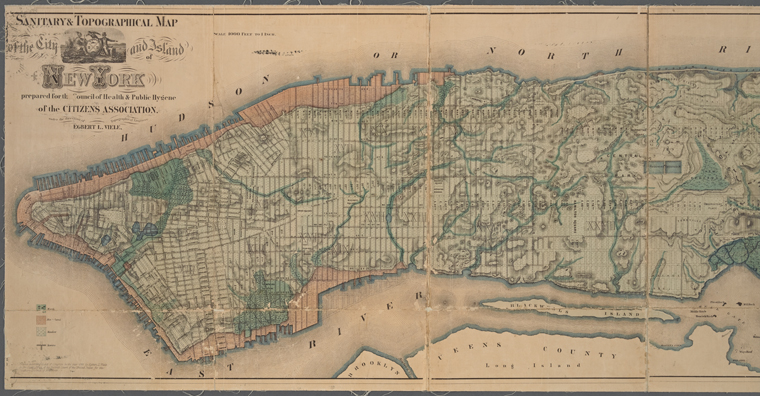Towards the beginning of her piece “Feminine Theories of Technology,” Judy Wajcman argues that the culture and history of Western society dictates all technology is gendered male. Initially shocked, I thought it was too extreme until I realized how difficult it was to think of female technology. It’s almost impossible to think of things that aren’t socially gendered (traditionally domestic appliances like an iron or an electric mixer) unless you widen technology’s definition. Expanding it to mean ‘useful tool that helps fix a problem or aid in difficulty’ allows for much more leeway and thinking of women’s technologies becomes a little easier.
Even though Wajcman writes “identification between technology and manliness is not inherent in biological sex difference,” the only technologies I could think of that could absolutely be considered as female were tied to the specific things that make women physically different from men. Bras can be considered technology, and certainly menstrual products like tampons and pads. Birth control is another good example of a ‘female’ technology, especially with its contentious history of being moderated by men. Finally, I landed on the vibrator, which also has a colorful and perhaps controversial history.
In the 19th century, many women suffered from a particularly vague condition called hysteria whose varied symptoms amounted to a general irritability. Doctors would alleviate this condition by manually stimulating a woman’s genitalia until she reached ‘paroxysm,’ which was supposed to temporarily cure all hysterical symptoms. Of course paroxysm turned out to actually be orgasm, and women continually returned to their male doctors to get relief from their ‘condition’ of sexual frustration. Unfortunately doctors grew tired of manually stimulating women all day, so they elected to invent a device that would mechanically do it for them- the first vibrator. For a while these were legitimate medical devices, but as soon as the secret was out about women gaining pleasure from them they became an unmentionable subject. “Women’s power, women’s culture and women’s pleasure are regarded as having been systematically controlled and dominated by men, operating through patriarchal institutions like medicine,” Wajcman writes. The moment women claimed vibrators as useful devices for themselves, they were invalidated and became taboo.
Vibrators were not socially embraced again until the late 1990s, when a Sex and the City episode revolved around a particular toy called the Rabbit. If prim Charlotte York could use a vibrator, then what was to stop everyone else? Today vibrators are more common than ever, but still considered a risqué topic. Advancements in technology mean that today’s vibrators can be small, quiet, and discreet but still pack the punch buyers are looking for. I headed over to the Museum of Sex hoping there would be a good retrospective on the history of vibrators and to check out the selection in their gift shop. Sadly, the museum’s permanent collection is on rotation and I’d missed the exhibit on vibrators, but their Spotlight gallery did feature a small exhibit on sex machines.
The focal point of the room is the Fuck Bike, which is basically exactly what it sounds like – a bike with a bunch of parts cobbled together that make a dildo attachment piston back and forth when you pedal. Since the pedaling seat and the pistoning apparatus are positioned over four feet apart, this invention struck me as more voyeuristic than actually “for women,” so I figured I would focus on the accompanying photographs of other sex machines and their inventors. Very quickly I found out that all of the inventors were men, the photographer who interviewed them was a man, and the focus was on the ingenuity of all these creators that made such wonderful devices.
Only one woman, Jessy, was present in the collection – photographed sitting naked in front of one of the machines and credited as “machine user.” I thought this was really telling and disheartening, and a clear illustration of “the gendered nature of technical expertise.” Was there not one woman who had designed a machine for herself? Jessy was quoted saying she liked using the particular machine she was pictured with because she had “total control” and it was “all about [her],” although there’s still a performative residue left over as she talks about her experience that was made possible by a man who didn’t even have to touch her, and is enjoyed by many men free to ogle her and use her story for themselves. Even though the physical experience belongs to the machine user, I’d say home built sex machines are actually men’s devices and not women’s. How exactly is crouching in front of a 6-foot long bike in order to get an orgasm convenient for a woman?!
Annoyed, I went down to the museum’s gift shop to take a look at the toys they had for sale. The environment had a loud, fun kind of vibe, with blasting R&B club hits and relaxed, trendy looking employees that gave visitors knowing nods and looks. Out of the 5 or 6 staff members present in the tiny store space, there were only two female employees, one who was laughing and giggling loudly at seemingly everything her male co-worker said to her. It was like all the employees were very into the edginess of working at the Museum of Sex and not about actually educating anyone about its social implications or history.
Hyper aware of all the men in the store, I looked at all the pink and purple vibrators and compared them to the boxes of lubes, phallic sleeves, and condoms for sale. Some of the items, like handcuffs, were technically unisex but showed bound women on the packaging so I counted them towards men. Most of the men’s items were easily accessible, but the products for women required interaction – the vibrators were set up as display only, so in order to actually learn about a device you’d have to ask an (male) employee about it. After looking at the huge selection of lube for too long, I asked an employee whether the selection of items available were mostly for men or women. He misunderstood my question and proceeded to very concisely explain my own anatomy to me and how the selection of lubes would work with it. I corrected him, asking, “Do you think there are more products here in general to be used by men or to be used by women?”
“Oh, pff, women, definitely. All we have for men is this, this, and this,” he pointed to the rows of packaging in the store. “And the condoms. EVERYTHING else is for women.”
Needless to say, I left feeling even more annoyed. Hoping for a more positive experience, I headed to Babeland, a sex toy store catered to women. Though smaller than the museum store, the products here were better organized and it was a much more relaxed environment. There were two women working, and after about a minute one of them came over to me and asked in a relaxed but welcoming way if I needed any help. This was already eons better than the loud, flashy museum store with men hovering around waiting to ‘educate’ female shoppers. In addition to a wide selection of supportive pillows, strap-on harnesses, stand-to-pee devices, and vibrators, Babeland also had signage around their store promoting inclusion and safety when experimenting with sex. Best of all, there was even a vibrator called the Eva that proudly stated it was designed FOR women BY women; something I hadn’t been able to find all day! I admitted to one of the employees that I was there to write a paper and was happy to see something like it since everything I had seen earlier had a male bent to them. “You mean the packaging?” she asked. “Yeah, that’s a Thing. Let me know if you want to see any of our boxes!” Babeland wasn’t a utopia of products designed exclusively by women, but the fact that they even sold more than one item created by women seemed revolutionary. I left shortly after and was encouraged to return and take advantage of their student discount.
It’s almost impossible to write about sex toys without acknowledging the obvious gendering of the toys and how they are used, but the disparity between male and female technologies is put into stark relief in this field. The fact that products made for women have actually been designed by men seems even more insidious than usual. Anything relating to a woman’s sexuality (or inherently female anatomy) is considered gauche unless a man moderates it, and the first step to rectifying this is dropping the 19th century taboos in order to fully adopt Wajcman’s feminist perspective on technology. We’re slowly getting there, with the “feminine media” of the internet giving many women access to liberating technologies that change how they view their bodies. Online sales are still frustrating because of their discretion, but hopefully rises in this ‘secret’ arena of demand will encourage more of a movement into the public.
Sources
http://www.theguardian.com/lifeandstyle/2012/sep/07/how-the-vibrator-caused-buzz
http://wiki.medialab-prado.es/images/4/4b/Wajcman_Feminist_theories_of_technology.pdf






